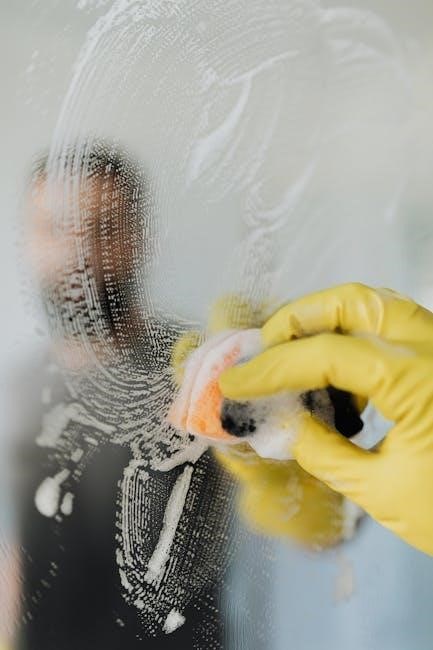
Paintless Dent Removal (PDR) is a specialized technique using custom tools to restore vehicle panels to their original shape without damaging the paint finish, offering an eco-friendly solution.
What is Paintless Dent Removal?
Paintless Dent Removal (PDR) is a non-invasive method of removing small dents, dings, and hail damage from vehicle panels without altering the original paint finish. It uses specialized tools to gently push or pull the metal back into shape, restoring the surface to its original form. This technique is highly effective for minor damages and preserves the vehicle’s factory paint, making it a preferred choice for car owners seeking quick and cost-efficient repairs.
History and Evolution of PDR
Paintless Dent Removal (PDR) originated in the 1960s, developed by Mercedes-Benz technicians to repair factory flaws without repainting. Initially used for minor dents, the technique evolved with advancements in tools and training. Today, PDR is a widely accepted method for hail damage and small dings, offering a cost-effective, eco-friendly alternative to traditional repairs.

How Paintless Dent Removal Works
Paintless Dent Removal (PDR) involves using specialized tools to gently manipulate metal panels from behind, restoring dents to their original shape without damaging the paint finish.
Basic Principles of PDR
Paintless Dent Removal (PDR) relies on manipulating metal panels using specialized tools to restore their original shape. Technicians access dents from the inside, leveraging steady pressure to push the metal back into place. The process requires identifying the right leverage points and ensuring the paint surface remains intact. Dents are typically repaired from the underside, with tools applied at the midpoint for optimal results. This method preserves the vehicle’s factory finish while eliminating minor imperfections effectively.
Steps Involved in the PDR Process
The PDR process begins with assessing the damage to determine if it’s suitable for repair. Technicians then gain access to the dent, typically from the inside of the panel. Specialized tools are used to apply controlled pressure, gently massaging the metal back into its original shape. The process involves precise manipulation to ensure the surface is smooth and even, with final adjustments made to restore the panel to its pre-dent condition.

Tools and Techniques for Paintless Dent Removal
Paintless Dent Removal (PDR) uses specialized tools like reflector boards and leverage tools to apply pressure, restoring vehicle panels without damaging the paint, ensuring a flawless finish.
Common Tools Used in PDR
Paintless Dent Removal relies on specialized tools like reflector boards, flexible pushing rods, and tabs to locate and repair dents. Technicians use leverage tools and precision hammers to gently reshape metal panels. Dent removal kits, including various tips and extensions, are essential for accessing dents from the inside. These tools enable technicians to apply steady pressure without damaging the paint, ensuring a flawless repair process.
Advanced Techniques for Complex Dents
For intricate dents, technicians employ advanced methods like heat application to soften metal and specialized tools for deep creases. Multi-probe systems and laser-guided instruments enhance precision, ensuring accurate repairs. These techniques allow for the removal of large or deeply ingrained dents without compromising the vehicle’s finish, demonstrating PDR’s versatility in addressing challenging damage while maintaining the integrity of the paint and panel.

Assessing Damage for Paintless Dent Repair
Evaluating dent size, location, and paint condition is crucial. Technicians inspect for cracks or deep creases to determine if PDR is feasible for the damage.
Evaluating Dent Size and Location
Evaluating the size and location of a dent is critical. Small, round dents are ideal for PDR, while large or irregular shapes may require traditional repairs. Dents in areas like edges or Body lines can be more challenging. Technicians assess if the dent is accessible and if the paint is intact. This step ensures PDR is the right solution, avoiding unnecessary repairs.
Determining if PDR is Suitable
Determining if PDR is suitable involves evaluating several factors. The size and depth of the dent are crucial; smaller, shallower dents are typically more suitable. The location of the dent on the vehicle is also important, as some areas may be harder to access. The shape of the dent matters too, with round dents being easier to repair than irregular ones. Additionally, the condition of the paint is essential—PDR works best when the paint is intact. Accessibility to the dent from the inside of the panel is necessary for the repair process. The type of vehicle material, such as steel or aluminum, can affect the suitability of PDR. Finally, the technician’s expertise plays a significant role in assessing these factors and determining if PDR is the appropriate repair method.
Benefits of Paintless Dent Removal
PDR is cost-effective, time-efficient, and preserves the vehicle’s original finish. It eliminates the need for painting, reducing waste and environmental impact, making it an eco-friendly solution.
Cost-Effectiveness
PDR is a cost-effective solution for minor dents and dings, eliminating the need for expensive paintwork. It reduces labor costs and time compared to traditional repairs. PDR is cheaper than conventional methods, making it a preferred choice for vehicle owners. Insurance companies often favor PDR for hail damage due to its lower costs. This method maintains the vehicle’s original finish, preserving its value without incurring high repair expenses.
Time Efficiency
Paintless Dent Removal is highly time-efficient, often requiring only hours or days for repairs, unlike traditional methods that can take weeks. PDR skips lengthy painting processes, reducing downtime significantly. Technicians can address multiple dents in a single session, making it ideal for hail damage or minor dings. This quick turnaround ensures vehicles are back on the road faster, minimizing inconvenience for owners and enhancing overall customer satisfaction.
Paintless Dent Removal Training and Certification
Training programs provide hands-on experience, teaching technicians the skills needed for successful PDR. Certification ensures credibility and maintains high standards in the industry, guaranteeing quality repairs.
Where to Find Training Programs
Training programs for Paintless Dent Removal are available through specialized schools, online platforms, and automotive repair shops. Websites like TheDingKing.com offer comprehensive PDR training courses. Local auto body shops and industry events often provide workshops. Additionally, manufacturers like Eastwood provide resources and guides for learning PDR techniques. Many programs combine theoretical knowledge with hands-on practice, ensuring technicians gain the skills needed for successful repairs. Online forums and communities also share information on reputable training centers.
Importance of Certification
Certification in Paintless Dent Removal ensures technicians master proper repair techniques, preventing further damage and maintaining vehicle value. It builds trust with customers, assuring high-quality results. Certified technicians often gain access to advanced tools and resources, enhancing repair precision. Certification also distinguishes professionals in the industry, leading to increased business opportunities and credibility. It verifies expertise, ensuring repairs meet industry standards and customer expectations effectively.
Common Types of Damage Treated with PDR
Paintless Dent Removal effectively addresses various types of vehicle damage, including hail damage and minor dings or door dents. It is particularly suitable for small, round dents without paint damage.
Hail Damage Repair
Paintless Dent Removal is highly effective for hail damage repair, addressing small, round dents caused by hailstones. This method restores vehicle panels without affecting the paint finish, making it a preferred solution. PDR is both cost-effective and time-efficient, ensuring vehicles return to their original condition quickly. It is particularly suitable for hail damage, as it maintains the factory paint job and avoids the need for extensive body shop repairs.
Minor Dings and Door Dents
Paintless Dent Removal is ideal for addressing minor dings and door dents caused by everyday incidents like parking lot mishaps or accidental bumps. PDR techniques gently manipulate the metal back to its original shape without damaging the paint, making it a quick and cost-effective solution. This method is particularly effective for small, round dents, ensuring vehicles maintain their pristine appearance and value, all while avoiding the need for extensive repairs.
DIY Paintless Dent Removal Kits
DIY Paintless Dent Removal Kits provide tools like levers and tabs to remove small dents at home, offering a cost-effective and time-efficient solution for minor damage.
Pros and Cons of DIY Kits
DIY Paintless Dent Removal Kits offer a cost-effective solution for minor dents, allowing homeowners to repair small damage without professional assistance. Kits include basic tools like levers and tabs, making them accessible for novice users. However, improper technique can worsen dents or damage paint, requiring professional intervention. While convenient, DIY kits may lack the precision of professional tools, making them less effective for complex or deep dents.
Recommended Tools for DIY PDR
Essential tools for DIY Paintless Dent Removal include a reflector board for visibility, flexible pushing tools for manipulating metal, and various tabs and knockdowns to gently reshape the surface. These tools help locate dents accurately and apply controlled pressure without damaging the paint. While basic kits are affordable, investing in quality tools ensures better results and minimizes the risk of further damage during the repair process.

Environmental Impact of Paintless Dent Removal
Paintless Dent Removal is eco-friendly, eliminating the need for painting and reducing VOC emissions and hazardous waste, making car repairs more sustainable and environmentally responsible.
Eco-Friendly Nature of PDR
Paintless Dent Removal is an eco-friendly solution as it eliminates the need for painting, reducing VOC emissions and hazardous waste. Unlike traditional repairs, PDR avoids harmful chemicals, making it a sustainable option. By preserving the original finish, it minimizes material waste and supports environmental conservation. This method aligns with green practices, offering a responsible alternative to conventional auto body repairs while maintaining vehicle aesthetics and functionality.
Reducing Waste and Chemical Use
Paintless Dent Removal significantly reduces waste and chemical use by eliminating the need for paint and fillers. Unlike traditional methods, PDR avoids sanding, priming, and painting, which generate hazardous materials and waste. This eco-conscious approach minimizes the environmental impact of automotive repairs, making it a preferred choice for environmentally responsible vehicle owners and service providers aiming to reduce their ecological footprint while maintaining high-quality results.